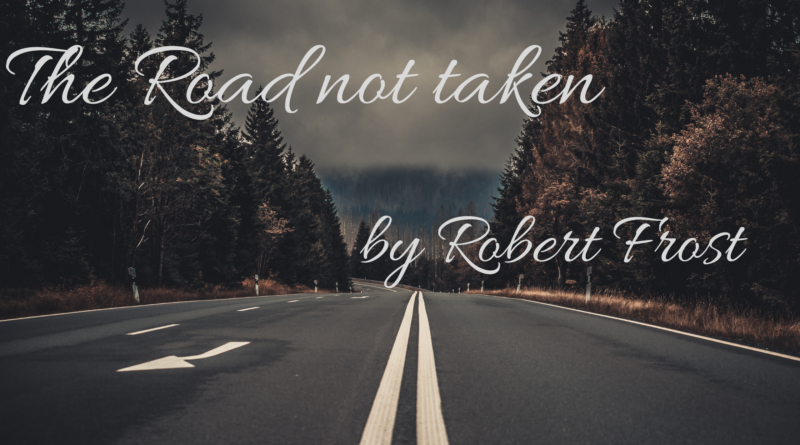
Stanza ends on the end-stopped word 'back', as though suggesting a finality, a path which cannot be returned to. Frost shows that he knew this even at the time, though he still hoped that he might be able to come back. The 'Yet' expresses his knowledge of the fact that as 'way leads on to way', each path inevitably moving forwards to an equally anonymous 'way', it is impossible to go back and explore the road not taken. 'Oh' also suggests regret, as it suggests a lament in conversation. We might think at this point about the title, which focuses not on the path he took but on 'the road not taken.' Life, Frost suggests is a matter of obsession with paths not taken. Exclamation at the middle of the third stanza suggests an implicit regret about how the speaker 'kept' the first, and so took the second. 'Oh, I kept the first for another day!/ Yet knowing how way leads on to way,/I doubted if I should ever come back'. Both roads were equal in their unblemished leaves, although he gives a suggestion that his own footsteps will be the ones to turn them 'black.' Use of repeated 'l' sounds gives the stanza a lyrical quality, which then connotes Frost's nostalgia and his appreciation of the beauty of the scene. 'And both that morning equally lay/In leaves no step had trodden black.' Finally we find our that this journey was taken on a morning, symbolizing perhaps new chances and journeys - although throughout the poem Frost questions how 'new' this journey actually is. Even 'about the same' is a very un-specific phrase, showing the lack of certain knowledge of each of these paths. Shows his growing realisation that no paths in life are untrodden and that people distinguish between paths arbitrarily, seizing on any little details that might help pick them apart. 'Though as for that the passing there/Had worn them really about the same' - Frost uses a number of monosyllabic words to explore (showing how own thought process) that the roads are actually more similar than he would like to think. It is also though, Frost is trying to erase his own choice, suggesting that it was an inevitable decision of the 'better claim' and 'claimant.' Might also look at alliteration in 'wanted wear', to emphasize these words. The way he discriminates between the roads is in saying that each has a 'claim', as though they are beings trying to justify his taking of them, but in a way which gives them agency over him.

It was 'grassy', which suggests spring and life, where 'wanted wear' suggests both that it lacked wear and also that it is almost personified as calling Frost to it. Second Road: 'just as fair/And having perhaps the better claim,/ Because it was grassy and wanted wear' - The second road is initially presented in a much more romantic way. The limits might be the unknowable factors which influence your course in life and the unknown consequences any path will bring. 'As far I could' suggests that there is a limit to his ability to see where this road takes him, just as he is limited with the other road as well. As in many poems, nature here takes on symbolic values as well as literal ones.įirst Road: 'I looked down one as far as I could/To where it bent in the undergrowth' The first road, the poet suggests, is only visible for a short while before it bends 'in the undergrowth' and its course is lost to him.

Many of Frost's poems describe landscape of rural New England and use it to express greater truths about the poet's own perceptions of life. If it is autumn, this may also suggest that the poet's life is also coming to an end, and is symbolic for a choice made late in life.įrost's upbringing in Vermont, the landscape of which is quite clearly shown in this poem. The ambiguity in this presentation suggests that the decision can either be a beginning or the start of an ending.

'Yellow' in woods can either be autumn or it can the blossoming of woodland flowers in spring.

'Two roads diverged in a yellow wood' - The immediate presentation of the woods as 'yellow' is deliberately ambiguous. On a deeper level, the poem explores decision-making, aging and a person's path through life. On a surface level, the poem narrates the experience of a man who went to the woods and had to make a decision about where to go.


 0 kommentar(er)
0 kommentar(er)
